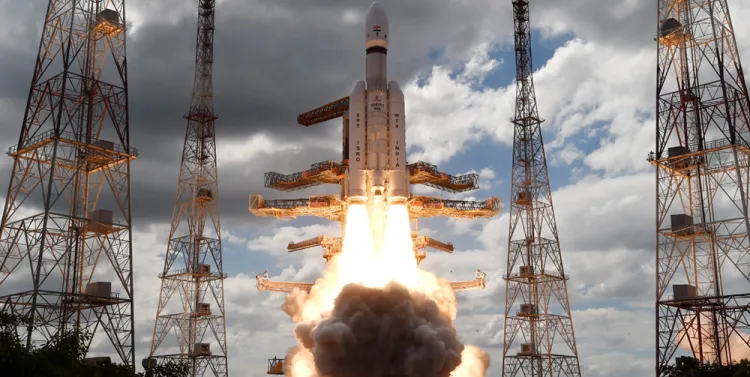The crypto market has once again turned its attention to Bitcoin (BTC) as the world’s largest cryptocurrency shows strong signs of a potential bullish reversal. Recent on-chain metrics, particularly the Binance Stablecoin Ratio (BSR), are hinting that investors might be gearing up for the next major uptrend.
Understanding the Binance Stablecoin Ratio (BSR)
The Binance Stablecoin Ratio measures the amount of stablecoins (like USDT, USDC, and BUSD) held on Binance compared to Bitcoin. When this ratio increases, it suggests that more investors are holding stablecoins instead of BTC — meaning they have funds ready to buy Bitcoin at favorable prices.
In simpler terms, a rising BSR indicates buying power sitting on the sidelines, which often precedes bullish momentum in the crypto market.
As of late October 2025, data from on-chain analytics platforms show that the BSR has reached its highest level in months, signaling that traders might soon rotate stablecoin holdings back into Bitcoin.
Why the Rising BSR Matters for Bitcoin’s Next Move
Historically, spikes in the Binance Stablecoin Ratio have aligned with upcoming Bitcoin rallies. This happens because when traders convert stablecoins into BTC, it increases buying demand, pushing prices upward.
According to recent data shared by CryptoQuant analysts, similar BSR patterns were observed before Bitcoin’s major price rallies in 2020 and early 2024. Both periods were followed by a sharp increase in BTC’s price as liquidity from stablecoins entered the market.
Currently, the ratio’s upward trajectory hints that investors are accumulating stablecoins with the intent to buy the dip, potentially leading to a strong market rebound in the coming weeks.
Bitcoin’s Price Movement: Consolidation Before Breakout
As of writing, Bitcoin is hovering around $66,000–$68,000, showing signs of consolidation after a brief correction earlier this month. Despite short-term volatility, analysts remain optimistic, noting that BTC’s technical structure resembles previous phases that led to major breakouts.
The Relative Strength Index (RSI) and Moving Average Convergence Divergence (MACD) indicators also point toward a reduction in selling pressure. Combined with the rising BSR, these signals strengthen the case for a bullish reversal pattern.
Moreover, Bitcoin’s price has maintained strong support above its 200-day moving average, a level that historically marks the transition between bearish and bullish cycles.
Institutional Interest Adds Fuel to the Fire
Institutional adoption continues to play a significant role in Bitcoin’s long-term growth. Data from blockchain analytics shows that institutional wallets have increased BTC accumulation since mid-October, particularly during price dips.
Meanwhile, the approval of new Bitcoin ETFs in several countries, along with growing interest from hedge funds, adds to the bullish sentiment. Increased institutional participation tends to reduce volatility and create long-term price stability — a critical factor for sustainable growth.
Experts also point out that corporate treasuries and global fintech platforms are slowly reintroducing Bitcoin exposure into their portfolios as macroeconomic conditions stabilize.
Macroeconomic Factors Supporting the Bullish Outlook
Beyond market-specific metrics, global economic conditions are also shaping Bitcoin’s bullish potential. Several factors are working in Bitcoin’s favor:
- Falling Inflation Rates: Major economies like the U.S. and Europe are reporting lower inflation levels, leading investors to re-enter risk assets like cryptocurrencies.
- Interest Rate Stability: The U.S. Federal Reserve’s pause on rate hikes has boosted investor confidence in digital assets.
- Geopolitical Uncertainty: Ongoing global tensions are prompting investors to look for safe-haven assets, with Bitcoin once again emerging as “digital gold.”
Together, these macroeconomic conditions create a favorable environment for a Bitcoin recovery rally.
The Role of Stablecoins in Market Liquidity
Stablecoins such as USDT and USDC act as the bridge between fiat currencies and digital assets. When investors hold more stablecoins on exchanges like Binance, it often means they are waiting for the right entry point into the crypto market.
Recent on-chain analysis reveals that stablecoin inflows to exchanges have increased by over 12% in the past two weeks — a clear indicator that traders are preparing to buy.
This liquidity buildup supports the theory that the market is gearing up for a bullish reversal, especially if Bitcoin’s price stabilizes above key resistance zones.
Technical Indicators Suggest an Upcoming Uptrend
From a technical standpoint, Bitcoin is currently trading within a descending wedge pattern, which often resolves in a bullish breakout. Analysts predict that if BTC can close above the $70,000 resistance level, it could trigger a strong rally toward $75,000–$80,000 in the short term.
Key technical indicators supporting this outlook include:
- RSI nearing neutral territory (around 50–55): Indicates balanced momentum before an upward swing.
- MACD crossover: Suggests renewed buying momentum.
- Increasing trading volume on Binance: A sign of rising investor participation.
What Analysts Are Saying
Several crypto experts have weighed in on Bitcoin’s current position:
- Ki Young Ju (CryptoQuant CEO) mentioned that “a rising Binance Stablecoin Ratio often marks the calm before a major Bitcoin rally.”
- Ali Martinez (Crypto analyst) noted that Bitcoin’s accumulation zones are expanding, hinting that whales are preparing for the next surge.
- Glassnode’s report also indicated that exchange reserves of Bitcoin are decreasing — a strong sign that investors prefer holding rather than selling.
Together, these factors suggest that the crypto market may be entering an accumulation phase, typically seen before major bullish trends.
Final Thoughts: Is Bitcoin Ready for a Bullish Reversal?
All signs are pointing in a positive direction for Bitcoin. The rising Binance Stablecoin Ratio, improved technical indicators, and favorable macroeconomic environment all suggest that BTC might be on the verge of a major reversal.
While short-term volatility cannot be ruled out, the overall sentiment in the market remains strongly bullish. If the BSR continues to rise and stablecoin liquidity flows back into Bitcoin, analysts believe we could see a renewed rally pushing BTC beyond its recent highs.
For traders and investors, this may be an ideal time to monitor on-chain metrics closely and prepare for potential breakout opportunities.
FAQs
1. What is the Binance Stablecoin Ratio (BSR)?
The Binance Stablecoin Ratio (BSR) measures the amount of stablecoins like USDT and USDC compared to Bitcoin held on Binance. A higher ratio suggests that investors are holding more stablecoins instead of BTC, indicating they have buying power ready to re-enter the market. Historically, an increasing BSR often signals a potential bullish move for Bitcoin.
2. Why does a rising BSR indicate a bullish trend?
A rising BSR shows that traders are accumulating stablecoins, which they can quickly use to buy Bitcoin when market conditions look favorable. This usually means more liquidity and potential buying pressure waiting to enter BTC. Once these stablecoins are converted to Bitcoin, demand increases, often leading to price surges and signaling the start of a bullish phase.
3. What technical levels should traders watch?
Traders should closely monitor Bitcoin’s resistance levels at $70,000 and $75,000. Breaking above these zones could confirm a strong bullish breakout and potentially trigger the next rally. On the downside, maintaining support around $65,000 is equally important, as it would indicate that Bitcoin’s current consolidation is healthy and could fuel upward momentum in the coming weeks.
4. How are stablecoins influencing Bitcoin’s liquidity?
Stablecoins like USDT and USDC play a crucial role in enhancing Bitcoin’s market liquidity. When more stablecoins flow into exchanges like Binance, it means investors have funds ready for quick purchases. This immediate buying power can boost trading volume, increase Bitcoin demand, and drive up its price once traders start converting those stablecoins into BTC during bullish conditions.
5. What risks remain for Bitcoin investors?
Despite growing optimism, Bitcoin investors should remain aware of key risks such as high volatility, sudden market corrections, and global regulatory uncertainties. Changes in government policies, economic conditions, or investor sentiment can impact short-term prices. However, Bitcoin’s long-term fundamentals — including limited supply, growing institutional adoption, and global acceptance — continue to support its potential for sustainable growth.













 Join Us
Join Us Follow Us
Follow Us









